Why is Most Land Located on Earth's Northern Hemisphere?
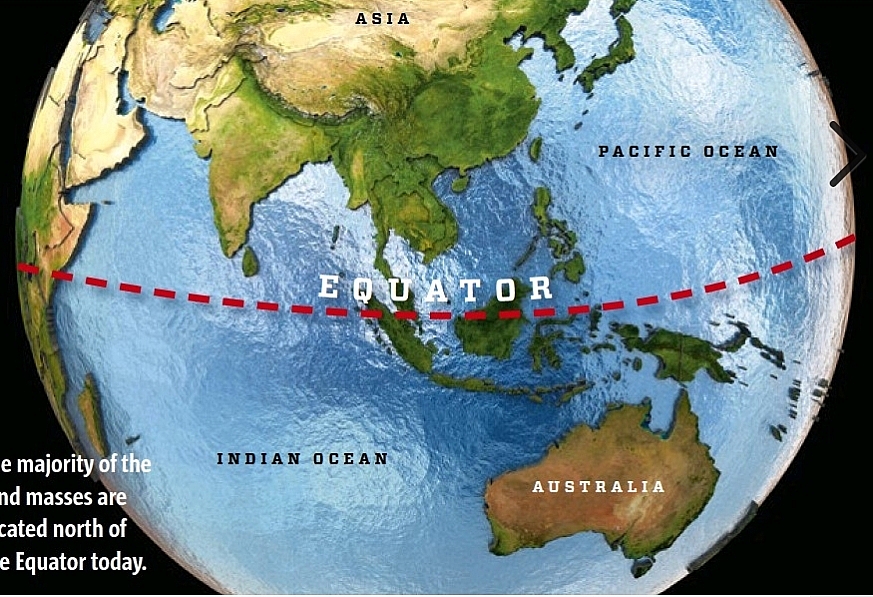 |
| Most Land Concentrated on Earth's Northern Hemisphere? |
| Table of Content |
The Northern Hemisphere continent mainly includes Europe, Asia, North America and northern Africa, northern South America. The continent of the Southern Hemisphere is smaller than the Northern Hemisphere, mainly Antarctica, Australia, most of South America and Southern Africa.
Why is most of the landmass located in the Northern Hemisphere Today? Why not in the South Hemisphere?
Many theories have been put forward to explain that more than two-thirds of the land is in the Northern Hemisphere, including a huge hidden continent to the south.
If you put the earth map upside down, you will easily notice a strange point. The planet's land is really unevenly distributed, with an estimated two-thirds concentrated in the Northern Hemisphere.
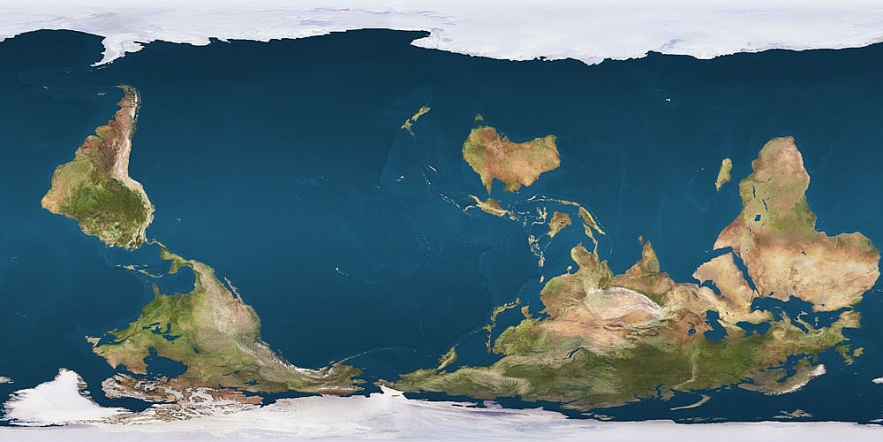 |
| Earth map upside down |
Throughout history, humans have come up with a series of theories to explain the uneven distribution of land on our earth.
Some people think that the rotation of the earth has pushed the continents upward in some unexplainable way. These people simply explain with the example of blender.
Others argue that the earth cooled down and formed an upside-down, sagging pyramid and the ocean overflowed to fill the surfaces, leaving soil in corners where most of the corners are in the Northern Hemisphere.
In fact, many people still think that the land distribution on earth is not really right. These people think there is a huge continent in the Southern Hemisphere to balance the amount of land in the Northern Hemisphere. This is called the hidden continent hypothesis.
However, the above explanations for land centered in the Northern Hemisphere and with the hidden continent hypothesis are wrong.
Read More: Top 7 Amazing Facts about the Earth we're living in!
What is the real and scientific reason why land is located mainly in the Northern Hemisphere?
Is the land really located in the Northern Hemisphere?
To account for the uneven land distribution on earth is like watching a very long and very slow movie.
The photo above, taken at random, shows land concentrated mainly in the Northern Hemisphere. If you take other random pictures, you can also easily see that the land is concentrated in the Southern, Western or Eastern Hemisphere.
That's true, due to our shooting angle.
The movement of tectonic plates
That's because the earth's land distribution is always rearranged very slowly, measured in hundreds of millions of years.
The uneven heating and cooling of molten rock in the earth's mantle creates moving convection currents.
The distribution of land masses have occurred due to the movement of tectonic plates - motion in Earth's upper layer. The most imfortant driver of tectonic plates is heat flows in Earth's interior, that make the large continental plates move under each other and sink into Earth.
However, there is no indication that plate tictonics favour one hemisphere over the other concerning land mass.
The land distribution on this planet varies according to the natural history of the earth. Currently, it is estimated that the Northern Hemisphere comprises 39% of the land compared to only 19% of the land in the Southern Hemisphere.
Currently, it is estimated that the Northern Hemisphere comprises 39% of the land compared to only 19% of the land in the Southern Hemisphere.
What Did Pangaea Look like?
However, 200 or 250 million years ago, land was concentrated in the Southern Hemisphere.
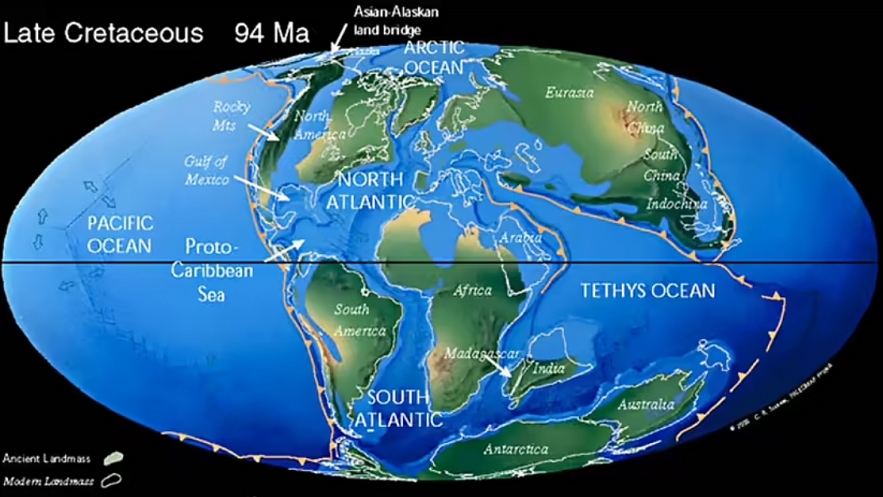 |
| Earth Look Like 250 Million Years Ago? |
If we could return to the Permian Age, we might find that most of Pangaea was in the Southern Hemisphere. Since then Pangaea has split into the present-day continents in ways that suggest they are rotating based on movements of tectonic plates over the Earth's mantle. The mantle itself may be subject to convection currents (or something similar) that mimic ocean currents which might explain why the mid-Atlantic Ocean ridge is uplifting and forcing North America apart from Europe and South America apart from Africa. It is likely that 250 million years from now, the continents will combine together again with eastern Asia, Australia and western North America at least crashing into one another. Then they'll start moving apart again to crash back together 500 million years from then.
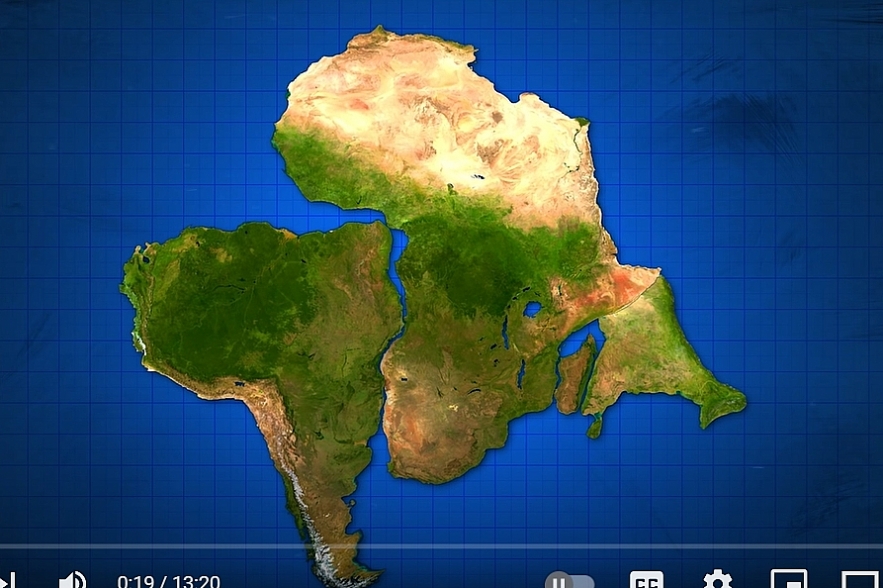 |
| What Did Pangaea Look like |
And you should remember that the changing and shifting of land on this earth continues.
| There are several cells of such waves. There are two types of areas, one where waves converge, while another where up-moving waves diverge in opposite direction below the crust. In the areas where waves converge, the land mass is concentrated over there. While in areas with diverging waves below, the crust moves away from there. |
Watch this video for a comprehensive understanding of the earth's layout on this planet:
To further understand the fact that more land is now distributed in the North you should explore our Northern Hemisphere.
What is the Northern Hemisphere?
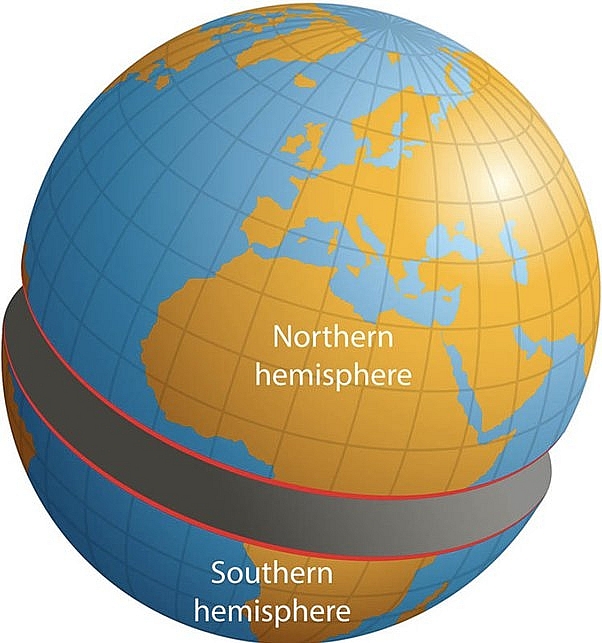 |
| What is the Southern Hemisphere and the Northern Hemisphere? |
The Northern Hemisphere is the half of the surface of the Earth (or celestial sphere) or of some of the planets in the solar system located north of the equator and north of the ecliptic, respectively. On Earth, the Northern Hemisphere is the dominant surface area in terms of continental land area and population of the world.
In temperate regions of the Northern Hemisphere, winter lasts from December to February (although winter weather can begin as early as November and last until March or sometimes until April). and summer from June to August. In the J2000 epoch, Earth's perihelion falls in early January, during the period around which Earth's orbital motion is fastest. Thus, Northern Hemisphere winters over the next few centuries tend to be shorter and theoretically less severe (negligible) than Southern Hemisphere winters at the same latitude. degree. However, due to the phenomenon of perihelion precession, this will not be the case, and vice versa after about 9,000 years. In addition, because the oceanic influence in the Southern Hemisphere is more pronounced, the climate of the Northern Hemisphere is in fact more severe. Tropical areas tend to have a rainy season during the 'summer' months and a dry season during the 'winter' months.
Areas north of the arctic circle will have some days in the summer when the sun never sets, and some days in the winter when the sun never rises. The duration of these phases ranges from a day at precise points above the Arctic Circle to several months at points very close to the Earth's North Pole.
In the Northern Hemisphere, from the time of the winter solstice, the Sun tends to rise slightly to the north each day, highest in the north on the summer solstice, and then lower again to the south and down. lowest in the south on the winter solstice.
Because the Earth's axis of rotation is only inclined to the perpendicular from the plane of its orbit by an angle of about 21.5° to 24.5° (about 23.438° in the J2000 epoch), in temperate regions During the entire year the Sun moves from east to west south of the zenith, creating a clockwise rotation throughout the day. . In the tropics, depending on the latitude, there will be days when the Sun is in the north (around the summer solstice more or less, at the most at the equator with this period up to 6 months - from the spring equinox to autumn. equinox and at least at the Tropic of Cancer with a duration of about 1 day) of the zenith and the days south of the zenith. On days when the Sun is north of the zenith, the shadow will rotate counterclockwise.
| Through precise calculations, scientists found that the distance from the North Pole to the geocentric (center of the Earth) is about 40km longer than from the South Pole to the geocentric. The Arctic region is slightly convex, while the Antarctic region is slightly concave. Thus, the Northern and Southern Hemispheres are not completely symmetrical. |
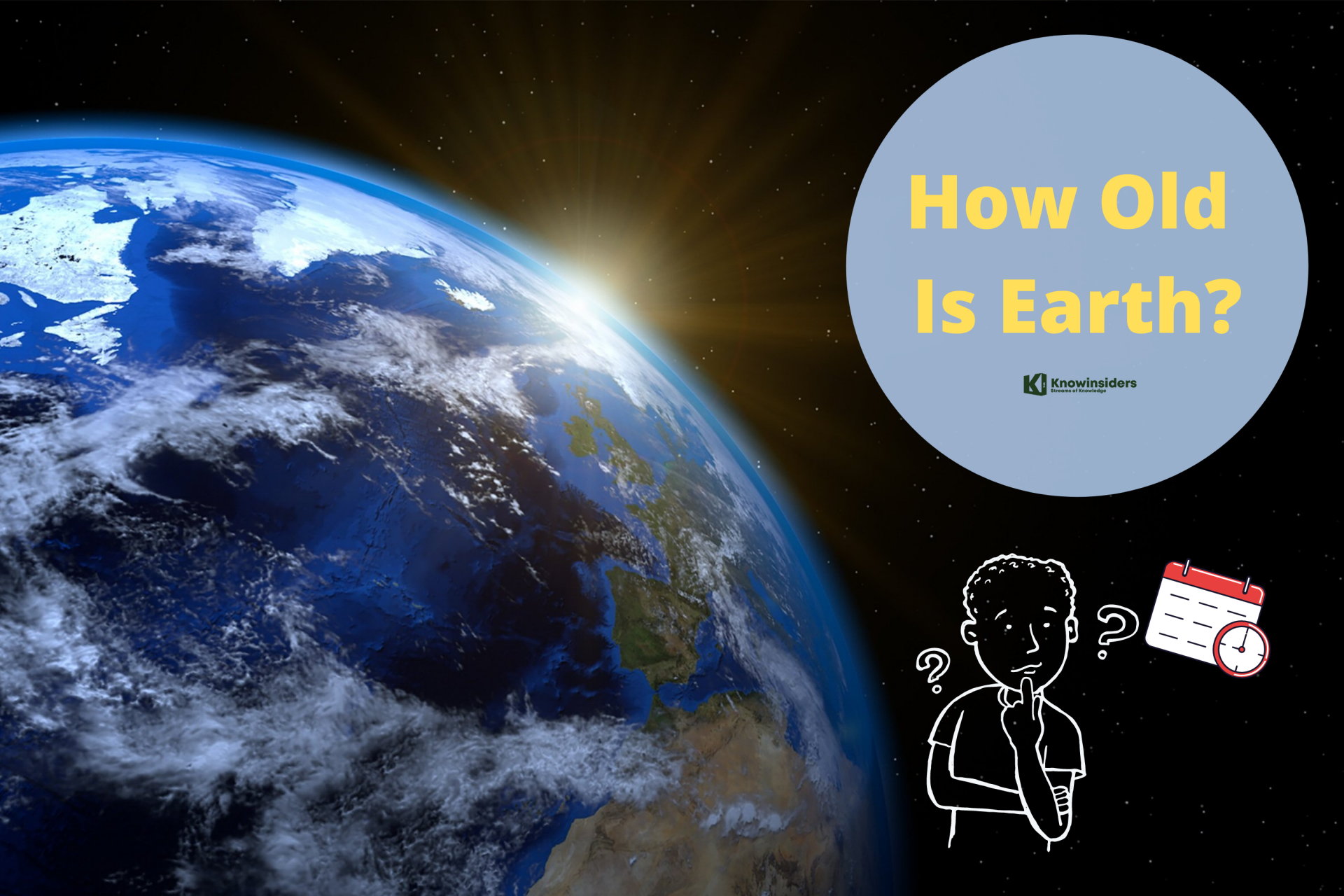 How Old Is The Earth In Science, Bible How Old Is The Earth In Science, Bible Although the universe is thought to be about 13.77 billion years old, planet Earth is much younger than that. Scroll down to know how old ... |
 15 Strangest Places on Earth You Won’t Believe Exist 15 Strangest Places on Earth You Won’t Believe Exist Earth is an extraodrinary planet, and so are many parts on Earth. Let's take a look at top 15 strangest places that you wont believe ... |
 Top 7 Amazing Facts about the Earth we're living in! Top 7 Amazing Facts about the Earth we're living in! Planet Earth? That shiny blue marble that has fascinated humanity since they first began to walk across its surface. And over the course of the ... |
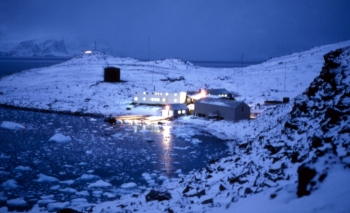 Top 7 Loneliest Places on the Planet Top 7 Loneliest Places on the Planet There are times when you want to leave everything behind and looking to take a break from the ongoing societal craps in your life, you ... |























